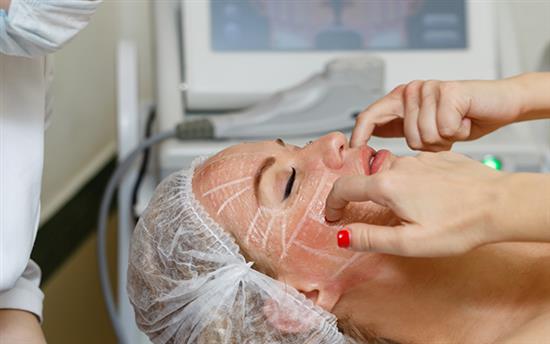
Facial ageing occurs for a number of reasons. Recent developments in the understanding of facial ageing have resulted in various modifications to face-lifting techniques which have resulted in enhanced results and importantly more natural results. Although it has long been recognised that the collagen in the skin thins with age resulting in loss of elasticity, it is also well known that the deeper tissues and the fat compartments descend with age as a result of gravity.
The most recent development is also the recognition that there is a loss of volume in the face as we age which predominantly manifests itself as a loss of fat. Modern facelift techniques, therefore, aim to restore the youthful features of the face by elevating the fat compartments and restoring the lost fat.
The most powerful surgical procedure in elevating the tissues is the tightening of the layer of tissue called the SMAS. This layer invests the muscles of the face but also the fat compartments. Elevating and tightening this layer restores the youthful appearance by lifting the fat compartments of the cheek and jawline. Typically, this results in an improvement in cheek definition and jawline definition with the elimination of jowls.
The SMAS layer can be adjusted in a number of different ways, and each represents a different facelift technique. Mr. Jag Chana is a cosmetic surgeon with over 20 years’ experience and a specialist interest in facial surgery. Speaking on the SMAS facelift technique and how it can affect the results of a facelift, he said:
“Current concepts of facial rejuvenation address three factors which include the ageing skin, descent of the deeper tissues and loss of volume or ‘atrophy’ of the deep soft tissues. All three factors need to be addressed by a combination of techniques.”
“In a facelift, the scar is carefully hidden in the creases in front of the ear and runs in the groove behind the ear and back into the scalp. One of the most frequently performed procedures is the SMAS facelift. Just behind the skin, there is a muscle layer called the Superficial Musculo-Aponeurotic System which provides some support to the deeper tissues of the face. This layer can be tightened in various ways to elevate the tissues and thereby correct the jowls, provide fullness high in the cheekbone area and also correct loose muscle in the neck. Correct elevation and tightening of this layer is critical to avoid tension on the skin and to avoid an ‘operated look’. The manner in which this layer is tightened and repositioned gives rise to some of the different types of techniques. The SMAS later can be tightened by removing a strip of this tissue and stitching the edges together which is called a SMASectomy facelift.”
“An alternative is to avoid removing a strip of the SMAS but to use tightening stitches to fold this later inward thereby preserving volume in the face, the SMAS plication facelift. If the SMAS layer is widely elevated a long flap of this tissue is available and the tension can then be adjusted in various directions according to where the ageing features are most prominent, the extended SMAS facelift. Rather than elevating the SMAS layer, many newer techniques involve placing stitches in loops to elevate and suspend the SMAS later. Each stitch can be placed precisely in a different vector to produce a slightly different lifting effect in various parts of the face.”
“The length of the scar may be shortened in younger patients and this has given rise to the procedure called a mini-facelift or ‘short scar’ facelift. In this procedure, the scar is mainly limited to the curves and creases along the front of the ear and is combined with one of the techniques of tightening the deeper tissues.”
“Any of these techniques can be combined with fat transfer to add volume to the face in situations where there has been a degree of facial atrophy with age. This is achieved using a technique where the patient’s own fat is re-injected into the face to produce a fuller and more youthful appearance.”
